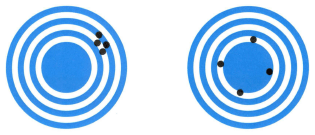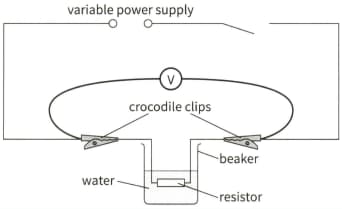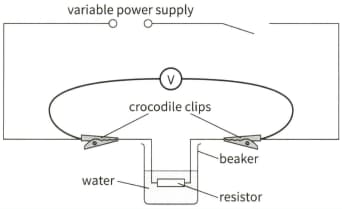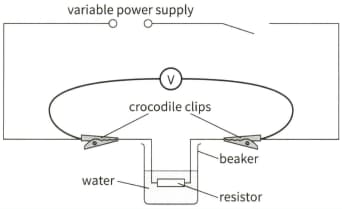A student releases a toy car to roll down a ramp, as shown.

The student measures the distance from the middle of the car as it is released to the bottom of the ramp and the distance travelled along the straight section before the car stops. He also measures the time taken to travel the distance . He then repeats the experiment using a different value of .
The student obtained readings with and , taking each reading for and twice. The readings were:
: values for were ; values for were
values for were ; values for were .
(d) Describe four sources of uncertainty or limitations of the procedure for this experiment.


Important Questions on Practical Skills at AS Level
protractor, ruler, metre rule, micrometer screw gauge, calipers, newton-meter balance, measuring cylinder, thermometer, stopwatch, ammeter and voltmeter.
Can you suggest, for each instrument in the list, what is its range and its smallest scale division, and suggest a simple experimental problem in using it?
You are investigating how the current through a resistor depends on its resistance when connected in a circuit. You are given resistors of the following values:
You are asked to take measurements with just six of these resistors. Which six resistors would you choose? Explain your choice.
Look at Figure. Draw similar diagrams to represent:

The left-hand diagram represents readings that are precise but not accurate; the right-hand diagram represents readings that are accurate but without precision.
A target where the holes are both precise and accurate
This apparatus shows a resistor in some water.

A student measures the rise in temperature of the water in using two different values of voltage.
The student wrote:
'When the voltage was set at , the rise in temperature of the water in was . The voltmeter reading decreased by about during the experiment, and so the final voltmeter reading was . 'The reading fluctuated from time to time by about . The smallest scale division on the thermometer was , but I could read it to . I did not have time to repeat the reading.
'When the voltage was set at , the rise in temperature in was and the voltage was almost the same at the end, but fluctuated by about ''
(a) Estimate the percentage uncertainty in the measurement of the first voltage.
This apparatus shows a resistor in some water.

A student measures the rise in temperature of the water in using two different values of voltage.
The student wrote:
'When the voltage was set at , the rise in temperature of the water in was . The voltmeter reading decreased by about during the experiment, and so the final voltmeter reading was . 'The reading fluctuated from time to time by about . The smallest scale division on the thermometer was , but I could read it to . I did not have time to repeat the reading.
'When the voltage was set at , the rise in temperature in was and the voltage was almost the same at the end, but fluctuated by about ''
(b) It is suggested that is related to according to the formula , where is a constant.
(ii) Justify the number of significant figures you have given for your value of .
This apparatus shows a resistor in some water.

A student measures the rise in temperature of the water in using two different values of voltage.
The student wrote:
'When the voltage was set at , the rise in temperature of the water in was . The voltmeter reading decreased by about during the experiment, and so the final voltmeter reading was . 'The reading fluctuated from time to time by about . The smallest scale division on the thermometer was , but I could read it to . I did not have time to repeat the reading.
'When the voltage was set at , the rise in temperature in was and the voltage was almost the same at the end, but fluctuated by about ''
(b) It is suggested that is related to according to the formula , where is a constant.
(iii) Explain whether the results support the suggested relationship.
